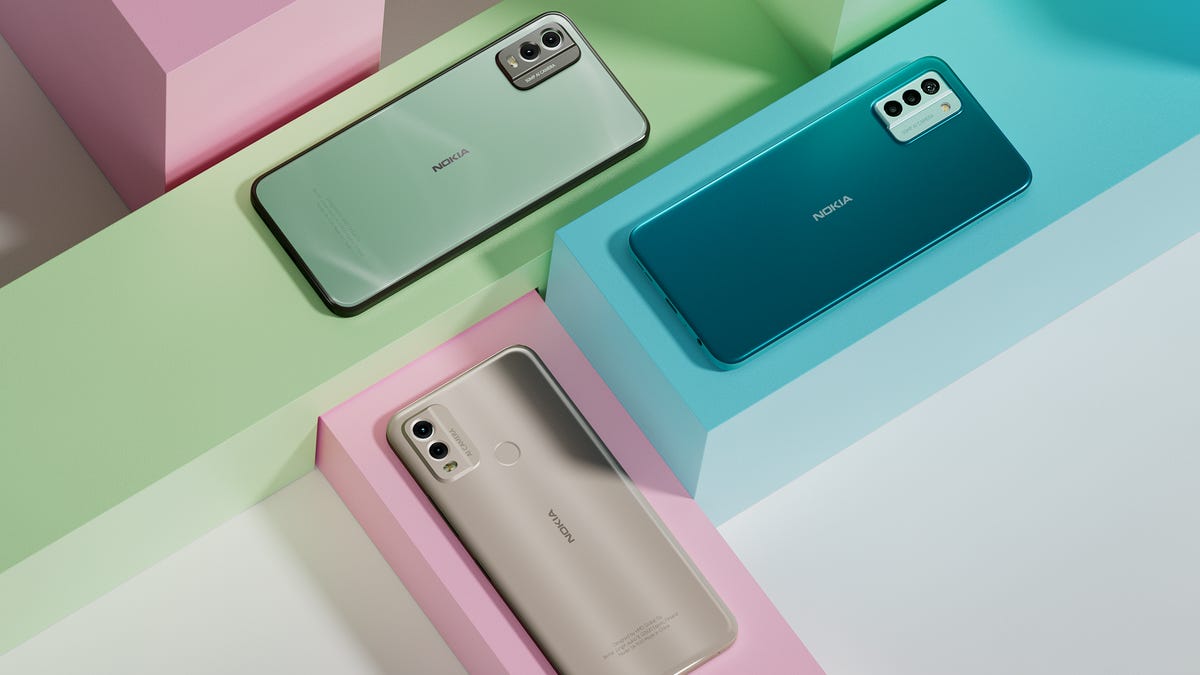Nokia's Newest Phones Boast Bumper Battery and Repairability
Meanwhile, the next generation of Nokia 5G devices is set to be manufactured in Europe.

The latest Nokia phones, being unveiled at MWC 2023.
If you're curious to know what sets Nokia phones apart in 2023, your best bet is to look under the hood. Three new Nokia smartphones announced at Mobile World Congress in Barcelona on Saturday all offer up to three days of battery life. Even better, one lets you replace the battery yourself when the time comes to do so.
All of the new Nokia devices announced at the world's biggest mobile show this year are on the affordable end of the spectrum. The Nokia G22 will cost £150 ($179) when it goes on sale in the UK on March 18. It's big selling point is that it is easy to replace the battery yourself as part of a partnership with iFixit, theoretically extended the life of a device that might have been dumped when the battery life started to diminish. Hopefully that shouldn't happen anytime soon: According to its spec sheet, the battery will maintain over 80% of its original capacity even after 800 full charging cycles.
The G22 comes in 64GB and 128GB storage configurations, packs a 50-megapixel camera, 6.5-inch display, 4GB of memory and has Android 12 straight out of the box (although two OS upgrades are guaranteed).
Two additions to the budget Nokia C Series, the Nokia C32 priced at £130 ($155) and the Nokia C22 priced at £110 ($113), will be available later this spring. The former offers a better camera, with a 50-megapixel sensor on the rear snapper and Android 13 straight out of the box. The latter, meanwhile, is a true entry-level smartphone, with high IP ratings and toughened glass making it a solid first phone for a younger teen who tends to put their possessions through the ringer.
Nokia wants its phones to be the Duracell Bunnies of the mobile world. Not only are they big on battery, in durability testing they reportedly survived up to three times as long as rivals. "People value sustainable, quality devices and they shouldn't have to compromise on price to get it," said Adam Ferguson, head of product marketing at HMD Global, in a statement. "We are continuing our journey towards more sustainable and longer-lasting devices."
US availability and pricing for the new phones has yet to be announced.
HMD, the company that has made Nokia phones since 2016, also announced that it's currently taking the first steps to manufacture future 5G devices in Europe. Like most phone makers, HMD currently manufactures most of its phones in China via a Foxconn subsidiary. In a briefing ahead of MWC, the Finland-based company wouldn't reveal which countries it intends to manufacture future phones in, citing security protections.
By manufacturing and testing phones in Europe, HMD hopes to be able guarantee a higher level of security for its business-focused clients. The first device to be manufactured will be a 5G phone aimed at business customers, followed by a consumer model at a later date.

